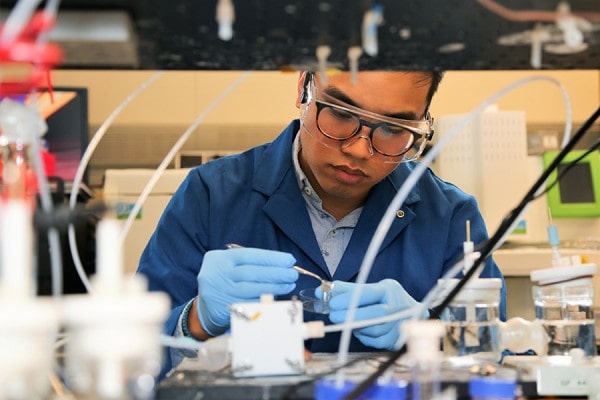Good afternoon, and welcome to Globe Climate, a newsletter about climate change, environment and resources in Canada.
This afternoon, the Alberta government announced that it is restoring a coal mining policy it revoked last spring. At the time, the move provoked a widespread public backlash detailed by The Globe. The original decision, which opened up more than 1.4 million hectares to exploration, was made without public consultation. Premier Jason Kenney previously defended the changes.
Lots more on coal and Canada’s resources industry in this week’s newsletter edition.
Now, let’s catch you up on other news.
Noteworthy reporting this week:
- The era of building big new hydropower dams in Quebec might be over. The province has agreed to purchase power from Apuiat, a wind-power development located near Port-Cartier and owned 50-50 by Boralex Inc. and Innu communities.
- Meanwhile, a small gathering of Inuit subsistence hunters staged a blockade at the Baffinland Iron Mines Corp. complex in Nunavut, claiming that their environmental concerns about a proposed expansion of the Mary River mine have not been heard.
A deeper dive
Ryan MacDonald is a senior editor at The Globe heading the climate, environment and resources team.
Canada’s reliance on the resource industry is about to be tested.
As the Globe’s European bureau chief, Eric Reguly, reported over the weekend, the global mining industry is embarking on a black-to-green revolution that is expected to trigger an unprecedented wave of sales and mergers.
In the global push to avert catastrophic climate change, investors’ new mantra is ESG – environmental, social and governance – and resource companies are looking for ways to change their businesses to reduce their exposure to their dirtiest, most carbon-intensive assets. That means coal, mostly, but also iron ore and oil.
Mark Cutifani, the CEO of Anglo American, one of the world’s biggest diversified mining companies, describes it as a “game-changing scenario.”
Now, to Canada.
Canada is widely recognized as a leading mining nation, with the total value of Canada’s mineral production estimated at $48-billion in 2019, according to government estimates.
While this country is committed to a general phase-out of the use of thermal coal for coal-fired electricity by 2030, there are still a number of projects on the books, including the proposed expansion for the Vista coal mine near Hinton, Alta. Ottawa has said the expansion project would have “significant” environmental effects and has ordered a federal assessment.
But there are other coal mines, too. In the foothills and the eastern slopes of the Rocky Mountains in Alberta, there is a growing backlash among ranchers and farmers to the provincial government’s decision to scrap its coal policy and ease some restrictions on mining.
These mines are digging up metallurgical or coking coal used in steel production. While thermal coal has fallen out of favour because of its carbon footprint – European investors in particular are pulling back from the fuel – the coking coal market has rebounded over the past six months because of a resurgence in demand coupled with pressures on the supply side.
Most ESG investors, however, see no difference between the two coals: They’re both dirty, with huge carbon footprints. And the ESG investing pressure won’t stop with coal.
What else you missed
- Calgary-based Canadian Power Holdings Inc. has acquired Okanagan Wind, which operates two wind farms in southern British Columbia, for more than $100-million, according to a source familiar with the transaction.
- TransAlta Corp. says the CEO who supervised its transition away from a provincially focused provider of coal-fired power to an international utility with natural gas and renewable power generation plans to retire at the end of March.
- A decades-old debate over development in an important wildlife corridor in an Alberta mountain community is to be back before council next week.
- Suncor says it has restarted construction of two carbon-emission reducing projects paused last March as the COVID-19 pandemic erupted: a $1.4-billion project to install two co-generation units at its Oil Sands Base Plant and a new $300-million wind power plant in southern Alberta.
- Denmark approved a plan to build the world’s first energy island in the North Sea. It will produce and store enough green energy to cover the electricity needs of three million European households.
Opinion and analysis
Senakw: In Vancouver the Squamish Nation shapes a sustainable village of 9,000
Alex Bozikovic: “It will be the largest and most prominent example yet of Indigenous city-building in North America, and its urban design breaks dramatically with convention: Senakw will be compact, green and dense, bringing public life across the site and below ground.”
The COVID-19 pandemic has surprisingly given countries confidence to tackle climate change, but has fractured global co-operation
David Parkinson: “The money is doing the talking now. That may drive the next wave of meaningful momentum on the climate front – even if the damaged global political discussion needs time to find its voice again.”
GM’s switch to electric vehicles is part hype, part hope
Konrad Yakabuski: “The automaker plans to run ads during Sunday’s Super Bowl that feature comedian Will Ferrell taking a light-hearted jab at Norway, where EVs accounted for more than half of new car sales in 2020. But GM’s new marketing will not match the company’s reality any time soon – perhaps not even in 2035.”
Green investing
Q: Green push from teachers’ pension plan members raises the question: Who should call the shots?
Jeff Jones writes: The fund says it will offer specifics in the coming months, including targets. But it stresses that it is already working toward net-zero goals through its investments, one of which is among the largest private renewable energy companies, Cubico Sustainable Investments. This week, it announced it had partnered up to buy the Canadian operations of Enwave Energy Corp., a district energy provider that allows buildings to share heating and cooling systems, often using greener forms of energy. What’s clear is that the investment arms of retirement plans will be under increasing pressure by some members to take the lead on financing the energy transition. The tough part is determining the right size and speed while keeping retirements secure for plan members amid a winding road to net-zero.
- Also read: Why companies need to get ahead of increasingly strict climate change regulations
Making waves
Each week The Globe will profile a young person making a difference in Canada. This week we’re highlighting the work of Phil De Luna, who is conducting decarbonizing research.

Phil De Luna, Director at the National Research CouncilHandout
My name is Phil De Luna. I’m 29, based in Toronto, and the youngest-ever director at the National Research Council in its more-than-100-year history.
I launched a seven-year $57-million collaborative research program to discover new technologies to help decarbonize Canada’s most hard-to-abate sectors. The Materials for Clean Fuels Challenge Program has three main thrusts: turning captured CO2 into fuels, producing clean hydrogen and using automated labs to discover new materials. We recently built a facility in Mississauga focused on these self-driving labs. We have more than 20 collaborative projects with universities and startups in Canada and internationally. These technologies will be essential to help us meet our net-zero emissions goals by 2050.
We’re making progress in technologies that can capture CO2 and use it to make fuels or other chemicals. These technologies require skills similar to existing fossil-based processes. This emerging “carbontech” area represents a sustainable destination for oil and gas workers to transition to. Just because as a society we need to transition to a sustainable future, doesn’t mean we need to leave anyone behind.
- Phil
Do you know an engaged young person? Someone who represents the real engines pursuing change in the country? Email us at GlobeClimate@globeandmail.com to tell us about them.
Photo of the week

This undated handout photo released on February 5, 2021, by the Bavarian State Collection of Zoology (Zoologische Staatssammlung Munchen) shows the chameleon 'Brookesia nana,' identified as Earth's smallest known reptile, in Madagascar. Scientists are warning that sustained destruction of forests in the north of the island threatens its survival.FRANK GLAW/AFP/Getty Images
Guides and Explainers
- We’ve rounded up our reporters’ content to help you learn about sustainable ways to live life at home, travel, invest, and generally to learn about our species at risk.
- If you like to read, here are books to help the environmentalist in you grow, as well as a downloadable e-book of Micro skills - Little Steps to Big Change.
Catch up on Globe Climate
- Investing in the future never looked so green
- Biden’s fast pace shifts the pressure to Ottawa
- Keystone is just the beginning for the Biden team
- Ottawa will still have plenty of gaps to fill in its 2021 climate plan
We want to hear from you. Email us: GlobeClimate@globeandmail.com. Do you know someone who needs this newsletter? Send them to our Newsletters page.
 Sierra Bein
Sierra Bein